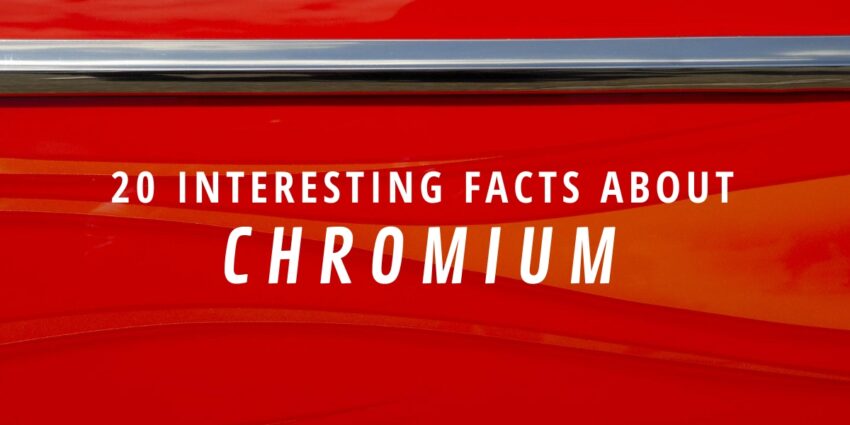Chromium is a chemical element with symbol Cr, atomic number 24, and is the first element in group 6. It is a steely-grey, lustrous, hard, and brittle transition metal. Chromium is valued as an important strategic mineral for a nation’s sovereignty. In fact, chromium is considered a Critical Resource Mineral (CRM) by the EU and many countries around the world.
Beyond the basics, though, what else should we know about chromium? Check out the 20 interesting facts below!
- The Qin Dynasty of China used chromium oxide on their weapons. Although it’s unclear whether they sought the color of the compounds or the properties, the metal did protect the weapons from degradation. The weapons of the famous Terracotta Army of the Qin Dynasty in China were tipped with chromium.
- Chromium has been used as dye for paintings since antiquity.
- Chromium was “discovered” by Louis-Nicholas Vauquelin while experimenting with a material known as Siberian red lead, also known as the mineral crocoite (PbCrO4), in 1797. He produced chromium oxide (CrO3) by mixing crocoite with hydrochloric acid (HCl).
- Chromite deposits were found near Baltimore in 1827, allowing the U.S. to become the largest producer of chromium until 1848.
- The world’s largest chromium producers are South Africa, with approximately 48% of global production, Kazakhstan, with approximately 13% of global chromium production, Turkey, with about 11% of global production, and India, with about 10% of global production.
- Chromium is not found as a free element in nature but is found in the form of ores. The main ore of chromium is chromite FeCr2O4.
- Chromium is the third hardest element just behind Carbon (the hardest) and Boron (second hardest).
- Chromium has a melting point of 3,465 degrees Fahrenheit!
- The word “Chromium” comes from the Greek word for color (“chroma”), reflecting the colorful nature of chromium compounds and the popularity of its pigments.
- The name “chromium” was proposed by French chemists Antoine-François de Fourcroy and René-Just Haüy.
- 85% of chromium is used for making alloys and super-alloys.
- High-speed tool steels contain about 3 to 5% chromium.
- A minimum of 11% chromium is present in stainless steel.
- Because of its hardness and resistance to corrosion chromium is used for surface coating. It is the most popular element for sheet coating.
- Chromium is used as glaze for the ceramics and as green pigment for glassmaking.
- Simple polished chromium reflects almost 70% of the visible spectrum, with almost 90% of infrared light being reflected.
- Chromium is necessary in synthetic ruby and emerald production.
- Chromium salts are used in preserving wood and tanning leather (90% of the leather is tanned this way).
- Chromium is the only element which shows antiferromagnetic ordering in its solid state at and below room temperature.
- Chrome Rims! Using a technique called electroplating, a thin layer of chromium can coat metal and plastic objects, including car parts and household appliances, to give a shiny, attractive finish. For example, automotive designers use chrome rims and wheels to spruce up their cars. Chrome plating is not only used for looks – because the chromium forms a protective oxide layer on the surface, chrome-plated objects resist corrosion.
